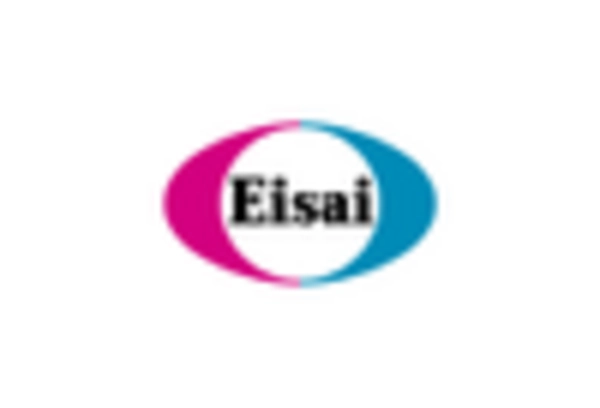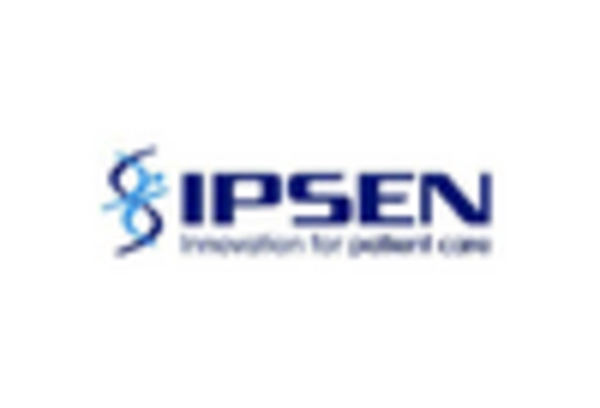Increased Awareness and Education
The growing awareness and education surrounding carcinoid tumors are pivotal in shaping the carcinoid tumor market. Initiatives by healthcare organizations and advocacy groups have been instrumental in disseminating information about the symptoms, diagnosis, and treatment options available for carcinoid tumors. This heightened awareness is likely to lead to earlier diagnosis and treatment, which can improve patient outcomes. Moreover, educational campaigns targeting both healthcare professionals and the general public may contribute to a more informed patient population, potentially increasing the number of individuals seeking medical attention for symptoms associated with carcinoid tumors. As awareness continues to rise, the carcinoid tumor market is expected to benefit from an influx of patients requiring specialized care and treatment.
Advancements in Treatment Modalities
Innovations in treatment modalities for carcinoid tumors are significantly influencing the carcinoid tumor market. Recent advancements include the development of targeted therapies and novel drug formulations that enhance treatment efficacy. For instance, somatostatin analogs have shown promise in managing symptoms and controlling tumor growth. The carcinoid tumor market is also witnessing the introduction of peptide receptor radionuclide therapy (PRRT), which has demonstrated improved outcomes for patients with advanced disease. As these treatment options become more widely available, they are likely to attract investment and interest from pharmaceutical companies, further stimulating market growth. The ongoing research and clinical trials aimed at optimizing these therapies may lead to more effective solutions, thereby expanding the treatment landscape for carcinoid tumors.
Rising Investment in Cancer Research
The increasing investment in cancer research is a significant driver for the carcinoid tumor market. Government and private funding for cancer research initiatives have been on the rise, with substantial allocations directed towards understanding rare tumors, including carcinoid tumors. This financial support facilitates the exploration of novel therapeutic approaches and enhances the development of diagnostic tools. Furthermore, collaborations between academic institutions and pharmaceutical companies are becoming more common, fostering innovation in the carcinoid tumor market. As research efforts expand, the potential for breakthroughs in treatment and management strategies increases, which may lead to improved patient outcomes and a more robust market for carcinoid tumor therapies.
Growing Incidence of Carcinoid Tumors
The increasing incidence of carcinoid tumors in the US is a primary driver for the carcinoid tumor market. Recent data indicates that the annual incidence rate of carcinoid tumors has been rising, with estimates suggesting approximately 5.3 cases per 100,000 individuals. This trend is likely attributed to improved diagnostic capabilities and heightened awareness among healthcare professionals. As more cases are diagnosed, the demand for effective treatment options and management strategies in the carcinoid tumor market is expected to grow. Furthermore, the aging population, which is more susceptible to various cancers, may contribute to this rising incidence. Consequently, healthcare providers are focusing on developing innovative therapies and diagnostic tools to address the needs of this patient population, thereby propelling the carcinoid tumor market forward.
Regulatory Support for Innovative Therapies
Regulatory support for innovative therapies is a crucial driver for the carcinoid tumor market. The US Food and Drug Administration (FDA) has been actively facilitating the approval process for new treatments, particularly those that demonstrate significant advancements over existing options. This supportive regulatory environment encourages pharmaceutical companies to invest in research and development for carcinoid tumors. The introduction of expedited review pathways, such as Breakthrough Therapy Designation, allows for faster access to potentially life-saving treatments. As a result, the carcinoid tumor market is likely to see an influx of new therapies that can address unmet medical needs, ultimately benefiting patients and healthcare providers alike.

















Leave a Comment